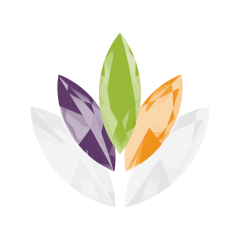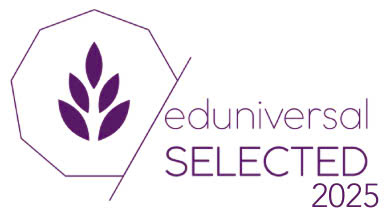- Eduniversal
-
Business Schools Ranking
-
Africa
- Algeria
- Angola
- Benin
- Cabo Verde
- Cameroon
- Congo
- Djibouti
- Egypt
- Eswatini
- Ethiopia
- Gabon
- Ghana
- Ivory Coast
- Kenya
- Lesotho
- Madagascar
- Malawi
- Mali
- Mauritania
- Mauritius
- Morocco
- Mozambique
- Namibia
- Nigeria
- RDC
- Rwanda
- Senegal
- Sierra Leone
- Somalia
- South Africa
- Sudan
- Tanzania
- Togo
- Tunisia
- Uganda
- Zambia
- Zimbabwe
- Central & Eastern Europe
- Central Asia
- Eurasia & Middle East
- Far East Asia
- Latin America
- North America
- Oceania
- Western Europe
-
Africa
- Schools of Excellence by field
- Awards
- INTERNATIONAL SCIENTIFIC COMMITTEE
- News
- Contact
Summary:
Vietnam's business education ecosystem is evolving rapidly in 2025. Driven by digitization, global integration, and economic reforms, this article explores key trends, persistent challenges, and growth opportunities for business schools in Vietnam, with a focus on shaping future-ready professionals.
Vietnam’s Business Education Landscape in 2025
Vietnam's booming economy is projected to expand at a robust rate of 8% in 2025, driven by industrialization and a strong push for digital transformation. This rapid economic rise fuels an equally fast-paced demand for advanced business education aligned with global standards.
Valued at approximately $503.79 million in 2025, Vietnam’s higher education market is experiencing a robust compound annual growth rate exceeding 15%.
This growth is supported by government investment, expanding middle-class demographics, and escalating technological adoption in both academia and industry.
Business schools are playing a pivotal role in supporting sectors ranging from manufacturing to services and the burgeoning digital economy. The focus is now on developing future-ready professionals equipped with advanced and diverse business skills.
For comparison on how other nations are shaping their business education systems, visit our overview of business schools in Thailand.
Key Trends Reshaping Vietnamese Business Schools
1. Globalization and International Accreditation
Vietnamese business schools are prioritizing internationalization to elevate quality and visibility. Institutions are forming partnerships with foreign universities, setting up joint programs, and pursuing global accreditations. Encouraged by the government’s education roadmap, the goal is to achieve educational quality comparable to leading Asian and global standards by 2030.
Students benefit through enhanced exposure to international business ecosystems and networks, significantly improving their global employability.
Educational systems in neighboring countries are also moving in this direction. Learn more about business schools in Malaysia.
2. Embracing EdTech and Hybrid Learning Models
Digital technology continues to redefine the classroom experience in 2025. Schools are adopting a range of EdTech platforms, including hybrid formats, online certificates, and immersive technologies like VR/AR to enhance learning outcomes. This digital shift was accelerated due to the pandemic and is now embedded in the structural design of Vietnamese education.
From accessibility to personalized pathways, EdTech offers flexible learning, helping institutions accommodate both traditional students and working professionals.
3. Focus on Emerging Business Specializations
To keep up with evolving market dynamics, business schools are introducing specialized programs in digital business, data analytics, entrepreneurship, and sustainable management. These emerging domains are designed to equip graduates with niche competencies aligned to the digital and green economy.
There is also an increased intersection of STEM and business to meet future market demands. Programs integrating AI, blockchain, and fintech are gaining traction.
You may also want to explore similar advancements in Singapore's business education scene.
4. Commitment to Corporate Social Responsibility (CSR) and Sustainability
Embedding sustainability into academic curricula is now a strategic priority for Vietnamese business schools. As global discourse increasingly favors ethical and environmentally responsible practices, institutions are aligning courses with the United Nations' Sustainable Development Goals (SDGs) and promoting corporate social responsibility in business development.
Students are more engaged and socially conscious, demanding that their business education goes beyond profit-driven strategies to include impact-driven leadership training.
5. Strengthening Industry Collaboration
Deep integration with the private sector ensures that business education in Vietnam remains practical and relevant. Collaboration comes in many forms—internships, joint research projects, and industry board participation—that enrich curricula and improve graduate employability.
Real-world exposure and hands-on experience are now essential for bridging the skills gap and enhancing the overall quality of business education.
Similar initiatives are evident in rapidly developing nations such as Indonesia.
6. Evolving Student Expectations and Learning Preferences
The new generation of students in Vietnam seeks globally competitive, technology-enhanced, and career-centric learning environments. There is a strong demand for personalized pathways, international mobility, and programs tailored to the evolving requirements of the labor market.
Schools are being challenged to balance academic rigor with innovation and adaptability to meet heightened student expectations.
Challenges Confronting Vietnamese Business Schools
1. Limitations in Funding and Infrastructure
Despite strong governmental support, several institutions—especially in rural areas—struggle with budgetary constraints, hindering efforts for digital upgrades and academic innovation. Infrastructural gaps can limit the ability to compete with more established global or urban counterparts.
2. Competition and Ensuring Consistent Quality
The number of business schools in Vietnam is rising, and with it comes stiffer competition, both locally and against international institutions. Maintaining quality teaching, publishing impactful research, and adhering to accreditation requirements remain crucial yet challenging tasks.
Countries like India have faced similar hurdles and taken strategic steps to stay competitive globally.
3. Talent Recruitment and Retention
Hiring qualified professors and industry experts is a common challenge in Vietnam. Competitive salaries, research funding, and global exposure are often limited, making it difficult to attract and retain high-caliber faculty.
4. Curriculum Agility in the Face of Rapid Change
Innovation cycles in the global economy are shorter than ever, yet changes to academic curricula often remain governed by lengthy bureaucratic processes. Schools that lack agility risk becoming outdated, particularly in tech-driven fields such as AI, data science, and e-commerce.
5. Urban–Rural Disparities in Access and Quality
While top-tier business schools in major cities thrive, institutions in rural areas still face difficulties in accessing cutting-edge resources, infrastructure, and digital tools, thus widening the gap in graduate readiness across geographies.
Some global counterparts, like Brazil, have seen similar challenges and implemented regional development strategies to bridge urban-rural divides in education quality.
Opportunities to Catalyze Growth and Innovation
1. Alignment with National Education Reforms
Major government efforts to modernize Vietnam’s education ecosystem—through digitalization, infrastructure upgrades, and global integration—are creating fertile ground for business schools to test new approaches, expand offerings, and attract international cooperation.
2. Rising Demand from a Growing Middle Class
The expansion of Vietnam’s middle-income population is increasing the demand for high-quality business education, including MBAs, short courses, and executive training. This trend provides lucrative opportunities for both domestic schools and foreign institutions seeking market entry or expansion.
Inspiration can be drawn from the trajectory of business schools in China, which have similarly tapped into middle-class growth to fuel their higher education sectors.
3. Leveraging Innovation Through EdTech
From adaptive learning algorithms to online assessment modules, Vietnam’s business schools have immense opportunity to harness EdTech for cost-effective expansion, real-time analytics, and student engagement. These technologies also help scale programs across locations and demographics.
4. Greater Corporate Involvement in Education
Corporations are playing an increasingly significant role in curriculum co-creation, offering internships, mentorships, and direct recruitment. Schools that facilitate such integration not only gain funding and relevance but also produce graduates with stronger labor market alignment and job readiness.
5. Rising Interest in Sustainability Education
As the world faces climate and ethical business challenges, sustainability-focused education is gaining global popularity. Vietnamese business schools that embed ESG (Environmental, Social, Governance) frameworks into academic design can appeal to globally conscious students and employers.
To see how other ecosystems are evolving sustainably, check out the models adopted by several business schools in Australia.
Business Schools Ranking in Vietnam
|
3 Palmes of Excellence Excellent Business Schools with reinforcing international influence |
Rank Position in
Palmes’ League |
Deans’ Recommendation
rate 2025 |
|---|---|---|
| 1 | 103 ‰ FEATURED |
|
2 Palmes of Excellence Good Business Schools with strong regional influence |
Rank Position in
Palmes’ League |
Deans’ Recommendation
rate 2025 |
|---|---|---|
| 1 | 159 ‰ | |
| 2 | 95 ‰ |
The Eduniversal Selected Schools list aims to highlight institutions by country are not yet eligible for a Palmes of Excellence League entry but are on a positive path toward achieving it.
The schools on the Eduniversal Selected list have been recognized by Eduniversal for their innovative projects, disruptive energy, and growing potential.
The schools on the Eduniversal Selected list have been recognized by Eduniversal for their innovative projects, disruptive energy, and growing potential.
College of Economics - Hue University
College of Economics and Engineering - Thai Nguyen University
School of Industrial Management - Ho Chi Minh City University of Technology
For a complete overview of master’s programs in Vietnam, visit our website.
You’ll find updated rankings, detailed program profiles, and exclusive advice to help you choose the right path for your career.
You’ll find updated rankings, detailed program profiles, and exclusive advice to help you choose the right path for your career.






